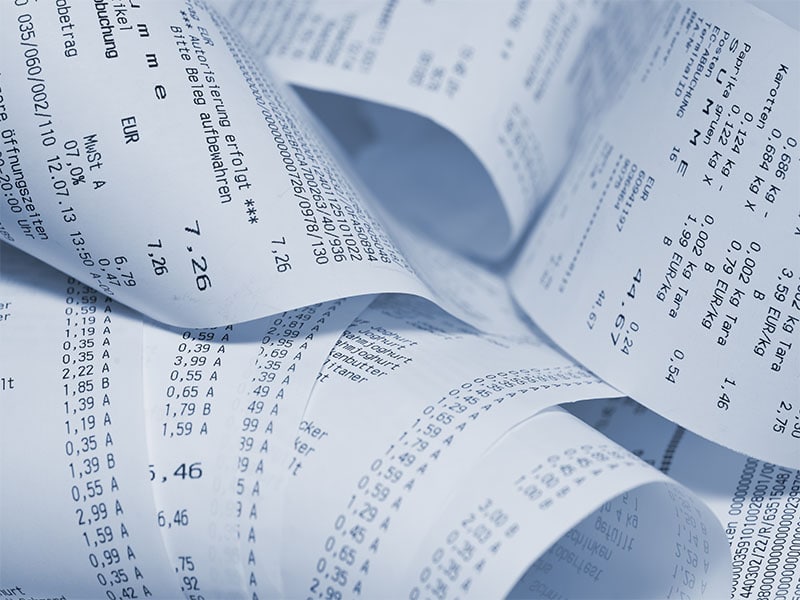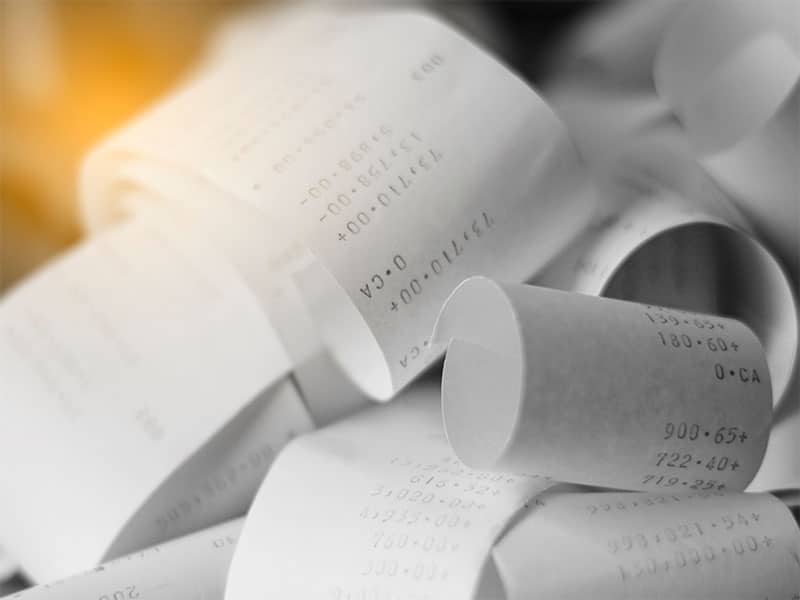Those little receipts stuffed into your wallet aren’t just annoying. They’re actually putting your health at risk – and the planet’s, too. Every purchase in Singapore comes with a little slip of paper, which usually ends up in the bottom of a purse or wadded up in a pocket, only to eventually end up in the trash. Even if you say you don’t want a receipt, it’s still printed and lands in the store’s waste bin instead of yours. That’s bad news.
Why? Because receipts are almost always printed on thermal paper, which is coated with bisphenol A, commonly known as BPA. Yup, the very stuff you won’t let your kids have in their water bottles is all over those little pieces of paper. Worse yet, the levels of BPAs on receipts are stunningly high. The non-profit Environmental Working Group did some testing and found that receipts have BPA levels up to 1,000 times higher than those inside the lining of a metal can.
And that has scary consequences.
A big study published in The Journal of the American Medical Association in 2014 found that BPA is absorbed through the skin, so handling those receipts could cause some major health issues such as obesity, diabetes, cancer, insomnia, arthritis, heart disease, MS, infertility and more. Pregnant mothers can pass BPA onto unborn children, too, which can create all sorts of horrible developmental problems.
If you don’t handle a lot of receipts, it may not seem like a big deal, but cashiers, for example, or people who collate receipts for events could be in real danger. Also, if your hands are greasy, it makes the absorption faster, so think about the times you’ve used a squirt of hand sanitiser then grabbed your bag of fast food with the receipt stapled at the top.
Bad for the planet
Receipts aren’t just making people sick. They’re making the planet sick, too. Because of the BPAs, those little slips can’t be recycled and all that paper adds up. Statistics are incredibly hard to come by. The only people really studying this are companies that make thermal paper and companies promoting digital receipts, each with its own agenda. Most information available to the public is years old, too. Back in 2013, Laves Chemie Consulting estimated that 1.3 million metric tonnes of thermal receipt paper was manufactured globally, up 15 percent from 2011. That equals 34 million trees every year. The now defunct Reseed, a program that was aimed at eliminating receipts, published articles about the problem in 2013 singling out the US as the largest receipt producer in the world. It estimated that in just one year, ten million trees, 945 million litres of oil and 3.8 billion litres of water were used in the creation of receipts for the US alone. The same year in the UK? Eleven billion receipts were printed. And receipt usage has only gone up.
Wow.
Of course, most people don’t realise receipts can’t be recycled so they toss them into the recycle bin thinking they’re doing a good thing. Those receipts are then mixed in with other recyclable paper products, tainting the “good” paper with BPAs, which means that BPAs can now end up in your toilet paper, paper towels or even paper food containers.
Cost to business
So why do companies use thermal paper anyway? Thermal paper receipts can be highly customised, so companies can easily print their logos or a coupon in a way they can’t on traditional paper receipts . Stores see this very directed marketing as more cost-effective than traditional advertising.
And thermal paper isn’t just used for receipts. It’s also used for pharmaceutical labels, printing labels, price tags and barcodes because it can produce a clearer image than traditional paper.
Traditionally, thermal paper has been somewhat inexpensive for businesses to use, with a single roll costing less than thirty cents. However, there is currently a shortage of leuco dye, the ingredient necessary for the production of thermal paper. In September, China cracked down on environmental issues, which forced the shutdown of several factories; this disrupted 80 percent of the dye supply, sent costs skyrocketing and created a thermal paper shortage.
The solution
Back in 2005, Apple did something revolutionary: they started using e-receipts; and since then there has been a surge of companies implementing them. International brands such as Top shop, Gap and Mothercare now routinely send e-receipts. ( Despite this, they haven’t really caught on in Singapore.) It’s not so much that businesses are concerned about your health or the planet. Rather, providing e-receipts means capturing those all-valuable email addresses so retailers can then reach out to consumers over and over to build a longterm relationship. In store, they can even pull up your data, see what you like and guide you to items you might want to buy. It’s a little Big Brother-ish, right? Opponents of e-receipts argue that they can leave you open to data breaches and phishing scams.
E-receipts are also generally only used for big-ticket items because, let’s face it, who has time to provide your email when you buy a candy bar? Then again, do you actually want or need a receipt when you buy a candy bar?
So, what can you do? For starters, decline receipts if you don’t need them and ask the retailer not to print one if possible. If you use a debit or credit card, you can get a record of the transaction if you need it later. Lobby your local stores to stop using thermal receipts and make the transition to e-receipts. If you do opt for e-receipts, protect yourself from data breaches or phishing scams by setting up a separate email solely for e-commerce. To protect your health, don’t use hand sanitiser or lotion before purchasing fast food, which almost always comes with a receipt. If you do handle receipts, wear gloves or wash your hands immediately.
Every little bit is a step in the right direction.
Singapore’s receipts
BY MAISIE HIEMSTRA, AGE 9
Because there is no information about receipts kept in Singapore, I asked my Year 4 class at Dulwich College to save all their receipts for the month of March and hand them in on 29 March, the last day before our break.
Five families remembered to bring in their receipts and I was very surprised at how few there were. My teacher helped me weigh them and the total weight was 420 grams. That didn’t seem like a lot, but then my mom helped me figure out how many receipts would be given out in all of Singapore in one month.
Here’s what we did:
• 420 grams divided by five families equals 84 grams per family. Each family had four members. That’s 21 grams per person, per month. So, per year, each person uses 252 grams equal to .25 kilos.
• There are 5,607 million people in Singapore. That’s 1,401,750 kilos per year, equal to 1,401 metric tonnes, which equals 23,175 trees. Wow.
If you look at it like that, it’s a lot more than you think it is. Singapore is a small country, but the numbers are huge. Think about how many receipts there are in the world.
Mother’s note: Obviously, this sample is too small to be statistically accurate, but it does give food for thought.
For more helpful tips head to our Living in Singapore section!
20 tops spots for nature lovers
Environmental news: Brilliant eco-friendly products and services
This article first appeared in the June 2018 edition of Expat Living. You can purchase a copy or subscribe so you never miss an issue!








